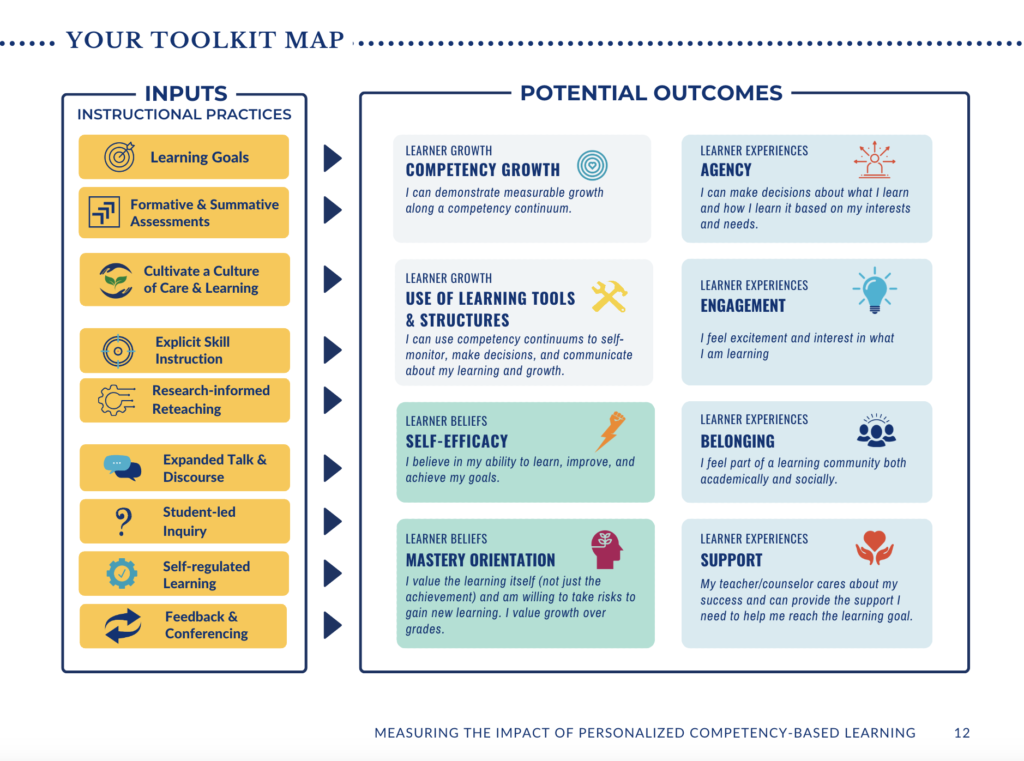We can’t measure what we haven’t clearly defined. That was the challenge we faced early on in our multi-year pilot to support personalized, competency-based learning (PCBL) in South Carolina. The field had a set of guiding principles, but not a concrete set of practices. So, we defined them.
I worked closely with my dear former colleagues at reDesign, Melissa Slater–dream instructional coach!–and Vicky Kim–dream designer!–to create a simple logic for our Measuring PCBL Toolkit. That was step one. Here’s how we did it.
First, what are the “inputs” that we believe are distinctly related to PCBL implementation? We called these inputs core instructional practices that are the “signature” of PCBL instruction. We defined nine core practices, drawing on the research on learning, and then organized them into the following four categories:

Next, we identified a set of outcomes–what we believed the impact would be on learners if these instructional practices were implemented with a high level of quality and consistency among learners. Our outcomes were organized into thre categories:
Once the logic model or research framework was locked in, we could thinking about and planning for step 2, designing PCBL interventions.
What are the learning experiences going to look like that will actually move the needle on student learning? That was our core question for PCBL intervention design.
This was all done in partnership with classroom teachers who had their own awesome ideas for how to incorporate the PSCG competencies into their practice. Each intervention was planned and supported with high-touch supports from an amazing team of instructional coaches. It followed this kind of structure:
Much of these insights, and the artifacts from classroom-based action research, are available in the South Carolina Impact Report, recently published by reDesign and made possible by the South Carolina Department of Education. Check it out to learn more about the broader state strategy for advancing personalized learning in South Carolina under the leadership of amazing education leaders like Stephanie DiStasio and Kristen Logan.
The Measuring PCBL Toolkit is one of those pieces of work that I remain so excited about. My hope for our field is that we find a way to collectively articulate–just as is done in other professional sectors–a set of “Common Practices” that are research-informed and that truly create learning environments in which all young people can grow and thrive. And that they are ubiquitous among educators, sturdy, and gradually fine-tuned as we continue to learn in our field.
The growing movement of competency-based education is the right one for this moment, and the work of redefining student success–such as through future-ready competencies–and clarifying the instructional practices that will truly move the needle on student learning, is essential.
You can learn more about the Measuring PCBL Toolkit here or listen to the podcast episode here, hosted by the SCDE Personalized Learning Team, where I had the chance to share more about the Measuring PCBL Toolkit at the time of its launch. Ultimately, our goal was to help provide clarity to educators about PCBL practices, and provide the tools to measure their impact on the journey towards making learning more personal for students in South Carolina and beyond.
